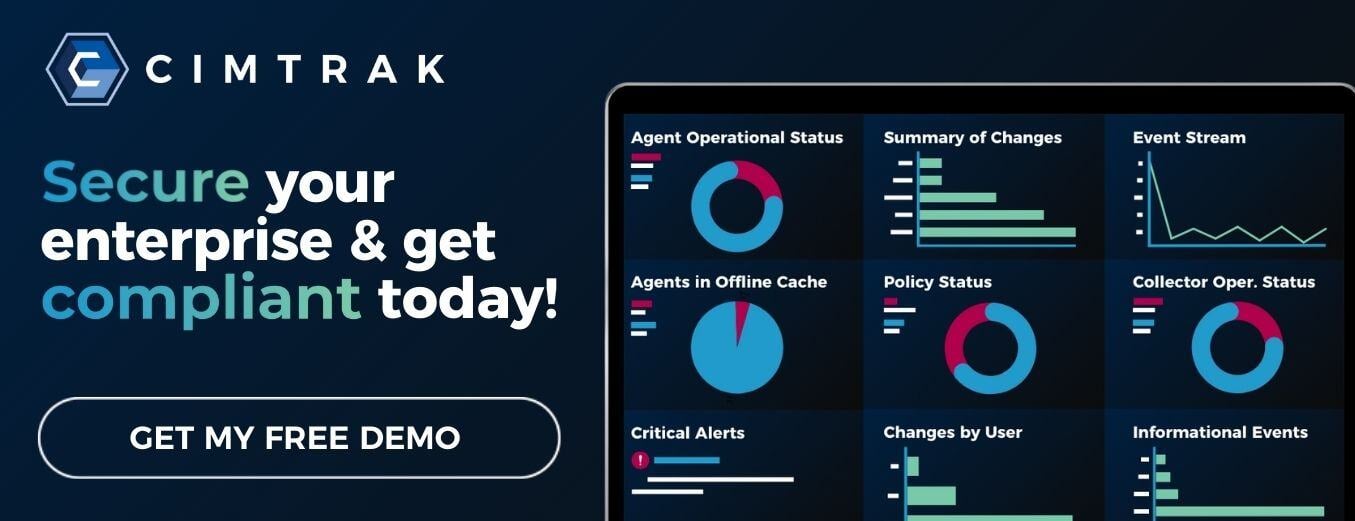Do you want your business to face consequences like fines, federal monitoring, lawsuits, or reputation loss? That’s an easy question: of course not. If you fail your IT compliance audits, you could face these consequences and more.
Conducting your own IT compliance review to identify weak points upfront can give you time to solve them before audit time rolls around. Instead of waiting to discover the flaws in your cybersecurity and IT compliance efforts until it’s too late, get a jump-start on the process today.
This post will give you a simple, step-by-step guide you and your team can follow to conduct an IT compliance review for your organization.
IT compliance is a critical component of risk management and cybersecurity hygiene. Whether preparing for a regulatory audit or strengthening internal security controls, conducting a thorough IT compliance review can uncover vulnerabilities and help meet industry standards such as HIPAA, PCI-DSS, or NIST.
What is an IT Compliance Review?
Let’s start with a crucial question: What is an IT compliance review? Many organizations conduct an internal IT compliance review in preparation for a compliance audit. This review can be performed regularly to help ensure your organization is consistently following all applicable compliance requirements.
A compliance review, like a compliance audit, is a review and evaluation of your practices, policies, and tools related to cybersecurity.
Some of the benefits of conducting regular IT compliance reviews include:
- Prepare for Compliance Audits: Regular compliance reviews are a perfect opportunity to give your team a “dry run” so when the next IT compliance audit rolls around, you know your team and systems are prepared.
- Implement Top Cybersecurity Practices: IT compliance reviews give you the opportunity and motivation to upgrade your cybersecurity systems and practices.
- Stress-Test Your Security: Lastly, a review will help to reveal any weak spots in your current cybersecurity systems. Only by exposing these vulnerabilities can you begin to solve them.
Let’s look at the six steps needed to conduct an IT compliance review for your organization.
1. Define Applicable IT Standards
Your first step is to identify the IT standards you need to review. First, consider the standards your business must meet. These standards will vary based on your industry, location, and the type of data you store in your systems.
IT compliance standards focus on three main data types:
- PII: Standing for Personally Identifiable Information, PII includes any data that can be used to identify a person. Social security numbers, address information, and phone numbers fall under PII.
- PHI: PHI stands for Protected Health Information. This data type includes anything covered by HIPAA laws, such as treatment dates, medical records, biometric identifiers, etc.
- Financial Data: Financial data refers to a person’s income, assets, or cash flow. Credit ratings and banking information are examples of financial data.
In addition to the compliance standards you must meet, you can also conduct IT compliance reviews for standards your business wants to meet internally.
2. Conduct a Risk Assessment
Once the standards needed to stress-test with your review have been determined, you will want to conduct a risk assessment. Risk assessments examine current cybersecurity threats, critical organizational assets, and weak or strong points in your defenses.
Your risk assessment can give an overall picture of how your cybersecurity efforts stack up against current threats.
Conducting a risk assessment is not a “one-and-done” practice. Since cyber-attacks and threats are always evolving, you should conduct this assessment periodically. CISA recommends conducting such an assessment regularly whenever significant changes occur within the organization. Depending on the industry, those that are high-risk need to conduct assessments on a quarterly basis or more.
3. Conduct a Self-Audit
Step three is to conduct a self-audit. This process is similar to your risk assessment, but some key differences exist.
Rather than looking at your system as a whole, a self-audit requires the examination of your processes and structures concerning a specific set of guidelines or requirements. In other words, instead of stress-testing your system, you are testing your processes against one compliance standard, such as GDPR or HIPAA.
The main advantage of conducting a self-audit is that your organization or your teams are then prepared for a real audit, as you have now covered the processes and documentation needed in the face of a real audit.
The downside of conducting a self-audit—it can be incredibly time-consuming.
4. Make Necessary Adjustments
If you fail a self-audit or other results from the conducted risk assessment are not as stellar as you would hope, you can use step four to make necessary improvements.
Take note of the unacceptable risks uncovered in the risk assessment, and then create a list of practices, technologies, or policies you could implement to solve these issues. This list might include both quick fixes and elements involved in a long-term compliance strategy.
When creating your long-term strategy, consider how all workflows and processes in your organization may impact compliance. Assign a team member to oversee the strategy and ensure necessary adjustments are made to reduce risk.
5. Automate Wherever Possible
Step five of your IT compliance review is to embrace automation. Although it is most likely impossible to automate all your compliance-related processes, too many manual processes make an inefficient cybersecurity framework prone to human error.
Some excellent candidates for automation include processes related to:
- Change alerts
- Reporting
- Ticketing
Cimcor’s flagship product, CimTrak, can help automate tedious and error-prone compliance-related processes. CimTrak automatically logs all changes to target systems and applications, allowing for easy reporting. Additionally, our software allows you to roll back unauthorized changes automatically and offers dynamic version control with automated snapshots. Additionally, CimTrak’s Ticketing module can be used to plan any change, allows for notes and approvals for reconciliation, and provides the base for integration with vendors such as CA Service Desk, Service Now, Cherwell, and Jira.
6. Create a Culture of Security Awareness
The last step in your IT compliance review is to create a culture of security awareness within your organization.
No matter how much time and work you put into your cybersecurity efforts, a chain is only as strong as its weakest link. You need employees at every level of your organization to understand the importance of data security and compliance.
However, fostering this type of security-minded approach to daily work can be challenging for all employees. You can begin to build a culture of security awareness through efforts like:
- Regular cybersecurity training
- Information-sharing (especially regarding the consequences of real data breaches in your industry)
- Explanation of the consequences of a failed IT compliance audit
Remaining Compliant After the IT Compliance Review
Following these steps can help you pass your internal review and set you up for success in an IT compliance audit. Implementing a file integrity monitoring solution is the best way to ensure continuous IT compliance.
CimTrak helps protect critical IT assets with the help of real-time automated detection, dynamic version control, immediate change reconciliation, and more. Get a customized demo today to see how CimTrak can help maintain continuous compliance for your business.
Tags:
Compliance
August 21, 2025




